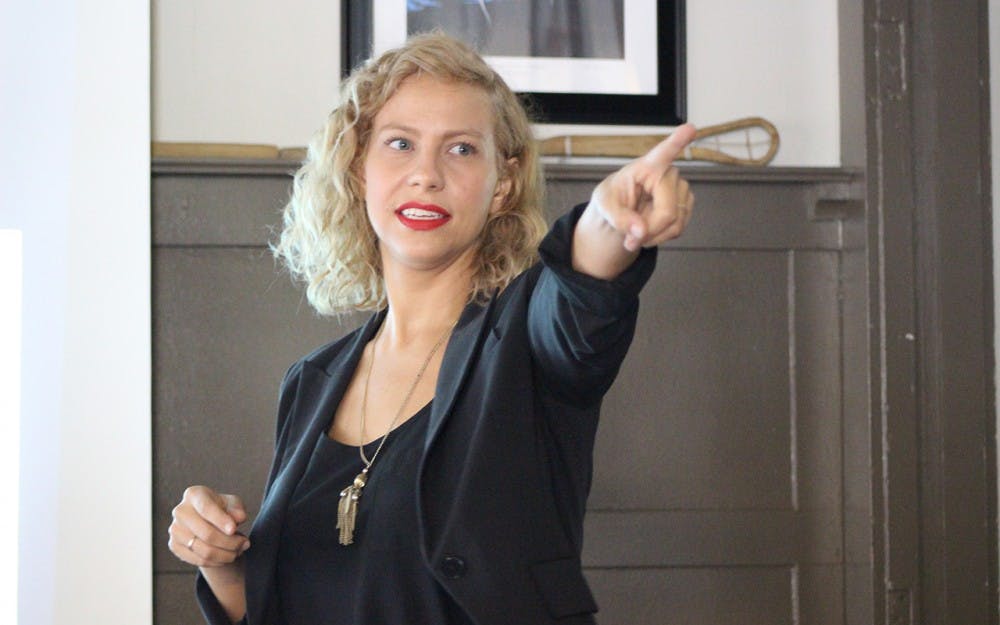Though there is not a large population of Native Americans in Indiana today, information is still being discovered from Native archaeological sites such as Angel Mounds in Evansville, Indiana.
Associate research scientist Elizabeth Watts Malouchos, a Ph.D. candidate in the Department of Anthropology, spoke on the topic of Native American architecture Wednesday afternoon as a part of the First Nations Educational and Cultural Center lunchtime speaker series.
The Mississippian period preceded colonization in North America. Malouchos focuses on architecture and archaeological artifacts in Indiana and is researching possible connections between several different excavating sites in southwestern Indiana.
“We’re still trying to tease apart the connections in southwestern Indiana, the connections between these different cultures we’re trying to identify,” Malouchos said.
Typical characteristics of Mississippian culture included earthen mound structures, wall trench architecture, ceremonialism, maize agriculture and shell tempered ceramics.
Earthen mounds are piles of soil raised above the ground on which significant members of Native American communities would live. Wall trench architecture supported the structures the people built.
Ceremonies were performed by the Native Americans to honor their culture and traditions, and corn comprised a large portion of people’s diets. At Angel Mounds in particular, red pieces of pottery with designs were found.
Three main excavations sites in the past have led to huge discoveries, such as the pottery and architectural designs in the Mississippian culture.
“Most of what we know about the Mississippian occupation comes from the large-scale excavations at Angel, the large-scale excavations at Southwind and these small excavations at Ellerbusch,” Malouchos said.
Malouchos said she has been fortunate in her own excavations. The owners of the land she has searched have been open, even offering for her to look at items they have found.
“I have some fantastic land owners, and I personally have only had very wonderful reactions,” Malouchos said. “That’s not the case all the time.”




